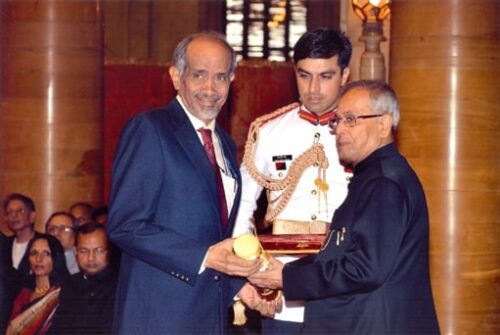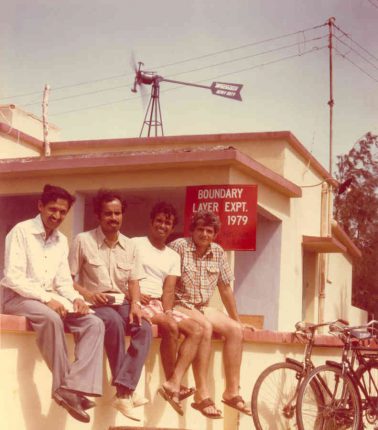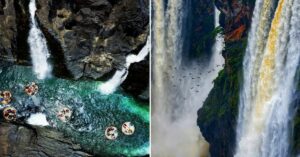Roddam Narasimha: How A Boy From Karnataka Helped India Understand The Monsoons
In 1979, he led the first large-scale national experiment to study the monsoons. He also created clouds in his lab. For his contributions to science, he won the Padma Vibhushan in 2013.

Renowned Indian aerospace scientist, fluid dynamicist and Padma Vibhushan recipient, Professor Roddam Narasimha succumbed to brain haemorrhage yesterday at a hospital in Bengaluru. He was 87 and is survived by his wife and daughter.
In his long and distinguished career, he was a Professor of Aerospace Engineering at the Indian Institute of Science (IISc), Director of the National Aerospace Laboratories (NAL) and the Chairman of the Engineering Mechanics Unit at Jawaharlal Nehru Centre for Advanced Scientific Research (JNCASR).
He was born in July 1933 in a village in Karnataka. His father was a physics professor at Central College in Bengaluru. After graduating from University Visvesvaraya College of Engineering, Narasimha went on to obtain a PhD in fluid dynamics at the California Institute of Technology in 1961. He joined IISc the following year.
The Monsoon Experiment
One of Narasimha’s greatest contributions to Indian science was the application of fluid dynamics to study the monsoons in India.
In fact, it was he who spearheaded the first national initiative to understand this particular weather phenomenon, starting way back in 1979. From May to September that year, his team gathered data from across the country using sensor towers, balloons, sodars and tethersondes. He envisioned the project and led researchers from over 20 institutes, including the India Meteorological Department, to collect various kinds of measurements. The Air Force also sent in their observations and so did the crew from vessels such as the ORV Sagar Kanya. Satellite images from INSAT were also added to the dataset.
What Narasimha was trying to do was analyse the first layer of atmosphere sitting on top of the Earth’s surface, whether it be over sea or land. This is called the boundary layer and plays a crucial role in the physics of the monsoons. It constantly exchanges heat, moisture, and energy with the surface leading to a lot of turbulence in this section of the atmosphere. Decoding this turbulence is key to understanding tropical weather systems like the monsoons and cyclones. But it is not easy. It requires precise measurements and complicated computer models.
This is what Narasimha and his team of four– A Prabhu, BS Adiga, K Narahari Rao and Syed Ameenulla, were trying to achieve with the Monsoon Trough Boundary Layer Experiment (MONTBLEX).
“I was curious about what the atmospheric boundary layer was like in India,” Narasimha had said about the motivation for his massive research undertaking. “It had not been studied at all – was it different in the tropics?”
MONTBLEX lasted more than a decade and its many findings have shaped our understanding of our rains. Turns out, the boundary layer is different in the tropics after all.
According to him, “They don’t follow the relations that are defined in the Western textbooks, for the momentum flux, for the surface friction, how much heat transfer happens, and so on.”
Changing The Winds Of Science
Professor Narasimha’s work on the monsoons did not end with MONTBLEX. He continued to study its various aspects such as the connection between solar activity and the monsoons. He even created a cumulus cloud in his lab to understand its workings.
He was also an active science communicator. Until earlier this year, he conducted cloud making workshops in his lab open to the public. His work has enriched research on weather systems, the monsoons and climate change, all of which have a tremendous impact on our agricultural economy and our future.
But his research on monsoons is only one of his many contributions. He studied shock waves, turbulence, aeronautics, gas dynamics and more, over his career spanning 60 years. His policy-making has changed the course of aerospace research in our country.
The Better India spoke to retired IISc Professor Vasudevan who worked closely with Professor Narasimha on the hypersonic wind tunnel, who says, “He was a very versatile person who made significant contributions to aerospace science and fluid dynamics. I fondly recollect when he handed over to me, one of his pet projects to build a research hypersonic wind tunnel at IISc.”
He adds, “And when the project was completed, he came back from a trip to Delhi and went straight to the aerospace department at 8 pm with boxes of sweets to congratulate me and my team on the success. He was then the Director of Aerospace Laboratory.”
We are forever indebted to Professor Roddam Narasimha for his brilliance, leadership, and vision that have laid the foundations for advanced science in the nation.

This story made me
- 97
- 121
- 89
- 167
Tell Us More
We bring stories straight from the heart of India, to inspire millions and create a wave of impact. Our positive movement is growing bigger everyday, and we would love for you to join it.
Please contribute whatever you can, every little penny helps our team in bringing you more stories that support dreams and spread hope.



















